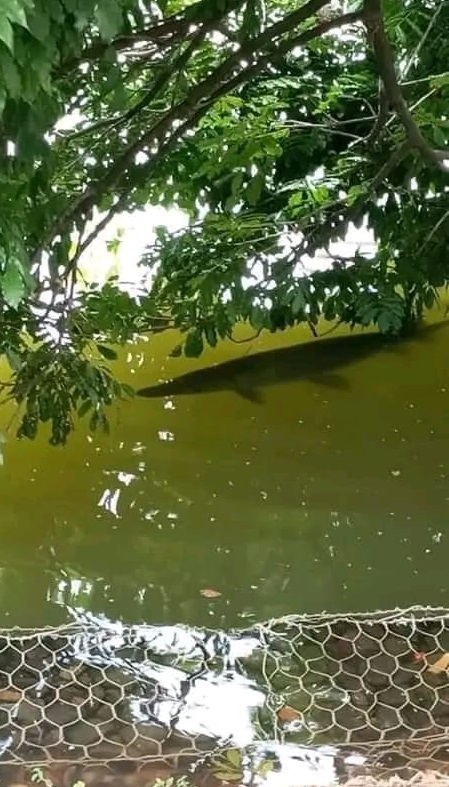The Kandy Region Irrigation Department has planned a special operation to remove the migratory carnivorous fish called Alligator Gar (Atractosteus spatula) from the Kandy lake.
Environmentalists say that alligator gar, which is considered to be a carnivorous fish, has been reported from the Kandy lake, which is a threat to the rest of the fish community there. Even aquatic birds can eat this species, which cannot be seen in the natural environment of Sri Lanka. Therefore, it is believed that these fish may have been released into the lake from a fish farm. On average, these fish grow to about 10 feet in length and weigh about 350 pounds. But growth depends on factors like environment and food

Environmentalists say that these fishes should be removed from the lake before the coming rainy season, and that there is a risk of this creature migrating to the Mahaweli River through the middle channel along with the discharge of water from the lake during heavy rains.
Kandy Divisional Irrigation Engineer Ayesha Weerasinghe stated that the Irrigation Department is currently conducting surveillance and together with the National Aquatic Resources Research and Development Agency (NARA) will catch the fish in the next few days.
Alligator gar is the largest recorded freshwater fish species in North America. Their natural habitats are currently found only in North and Central America. Alligator gar can be found in the lower Mississippi River Valley, from Oklahoma west, Arkansas north, Texas and parts of Mexico to the south, and Florida to the east. With a long history of more than 100 million years, Alligator Gar is considered a living fossil.
Bringing ornamental fish to a country like Sri Lanka with sensitive aquatic environments is subject to strict regulation. Even now, invasive fish such as Knife Fish (Mannawa) and Scavenger are reported in local reservoirs and it has been identified as a serious threat to the survival of the local fish community.
Nadeika Daya Bandara from Kandy